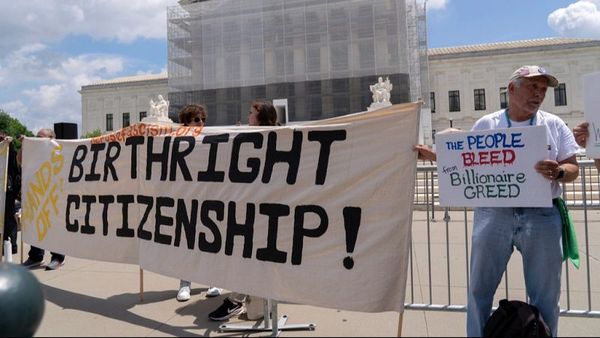
1 | The Rider
Tim Krabbé (1978; English translation 2002)
This fictional account of a professional bicycle race by the Dutch journalist, author and former racing cyclist, is a cult classic. Finely written and full of rhetorical flourishes, it captures the peculiar dynamic of the peloton beautifully, from the point of view of one rider. At just 150 pages, it is a book you simply have to put down, in order to savour it. It is also a meditation on pain, for armchair enthusiasts who don’t fancy it much themselves. For bike-racing fans, it’s essential reading.

2 | Full Tilt: Ireland to India with a Bicycle
Dervla Murphy (1965)
A cycle touring classic, the best kind of adventure story and a clarion call to “travel for travel’s sake”. I read it in the late 1990s, working in London: six months later, I bought a bespoke steel bicycle, abandoned my career and set off to pedal around the world. Reading it, I realised that you don’t need a wealth of knowledge and experience to embark on a journey like this. If you have a flair for getting on with people, then you’re ready to leave now. Murphy’s writing is uplifting, like riding through dawn on a summer’s day.

3 | Richard’s Bicycle Book
Richard Ballantine (1972; out of print)
Part manual, part manifesto, full of humour, common sense and practical advice, this instantly became a bible to the new wave of folk who took to two wheels during the oil crisis in the early 70s. For the next two decades, it was the only mass market cycling book: it’s been reprinted numerous times, selling more than a million copies through various iterations. The manual part of the book is irrelevant now, because the bicycle has changed so much. However, the manifesto part remains fresh: the author’s passion for the machine and his avowal that cyclists own the road as much as motorists, remain as pertinent as ever.

4 | Bicycle: The History
David V Herlihy (2004)
For much of the 20th century, the history of the bicycle was muddied by the proprietary claims and myths of competing industrial nations: Germany, France, England, Italy, the US and even Scotland all asserted they had invented the machine. Herlihy brings academic rigour and clarity to the development of the steel horse. It is a fantastic tale – of ingenuity, eccentric inventors, technological impasses, lost fortunes and luck, which culminates in the first modern bicycle. The prose can be a little dry but the illustrations are excellent.

5 | The Escape Artist: Life from the Saddle
Matt Seaton (2002)
An autobiographical tale about one man’s obsession with amateur bike-racing: fine-tuning the machine, shaving the legs, the physical and emotional fellowship of riding with friends, the early-morning training rides, the etiquette of the peloton and the suffering are all here. So far, so familiar. The real suffering, however, emerges in the second, interwoven tale – of the death of Seaton’s wife, the journalist Ruth Picardie, from breast cancer, aged 33, two years after the birth of their twins. Somehow Seaton avoids being mawkish. It’s an elegantly written, heartbreaking story about growing up.

6 | Put Me Back On My Bike: In Search of Tom Simpson
William Fotheringham (2002)
Guardian writer Fotheringham has written several good biographies of racing cyclists but this one stands out, not least because Tom Simpson was such a mercurial character. A lionhearted anti-hero, Simpson collapsed and died on Mont Ventoux during the Tour de France in 1967, with amphetamines and cognac in his blood. He was an Olympic medallist, a world champion, an obsessive professional and the first Briton to wear the yellow jersey in the Tour de France. Thus, he helped turn an insular European race into a global phenomenon. Fotheringham sympathetically unravels the most enigmatic figure British cycling has produced.

7 | Cycling
Viscount Bury and G Lacy Hillier (1887; out of print)
In elegant prose, this book records the bicycle on the cusp of the first golden age. There are chapters on dress (“Cashmere neck handkerchiefs are to be preferred … for night riding in the winter”), clubs, touring and “Tricycling for Ladies”. At the time of publication, cycling was still largely the exclusive pastime of athletic, wealthy males; by 1895, the bicycle was the most popular form of transport on the planet. The simple machine had changed society in innumerable ways for ever.

8 | The Third Policeman
Flann O’Brien (pub posthumously, 1967)
A satirical, absurdist murder mystery by an overlooked giant of 20th-century Irish literature. At the heart of this offbeat tale is the unrequited love affair between a man and a bicycle. If that’s not bizarre enough, Sergeant Pluck’s “Atomic Theory” – that prolonged contact with a bicycle saddle can result in “molecular exchange” – leads him to conclude: “You would be surprised at the number of people in these parts who are nearly half people and half bicycle.”

9 | French Revolutions
Tim Moore (2001)
It’s a simple premise – ride the route of the Tour de France before the annual race takes place – but a difficult one to pull off. Fortunately, Moore is explosively funny and a terrific storyteller. As Moore was a novice cyclist, there is plenty of material on boils, the application of Savlon and the ideal daily alcohol consumption for optimum performance. Amid the hilarity, though, he weaves in some of the more infamous and bizarre moments in Tour history, making it a joyful introduction to the greatest bike race of them all.

10 | A Rough Ride
Paul Kimmage (1990)
There are several good books – by the likes of Matt Rendell, David Millar and David Walsh – that investigate drugs in professional bike racing, but Kimmage’s visceral polemic was the first to reveal that doping was far more widespread than claimed. I read it spellbound. Of course, much worse was to befall the sport and the organisation that governs it in succeeding years, but Kimmage, an Irish ex-pro cyclist turned journalist, bravely broke the law of omerta in the peloton: he spoke out about the dark heart of European bike racing for the first time.
Rob Penn is the author of The Man Who Made Things Out of Trees and It’s All About the Bike







